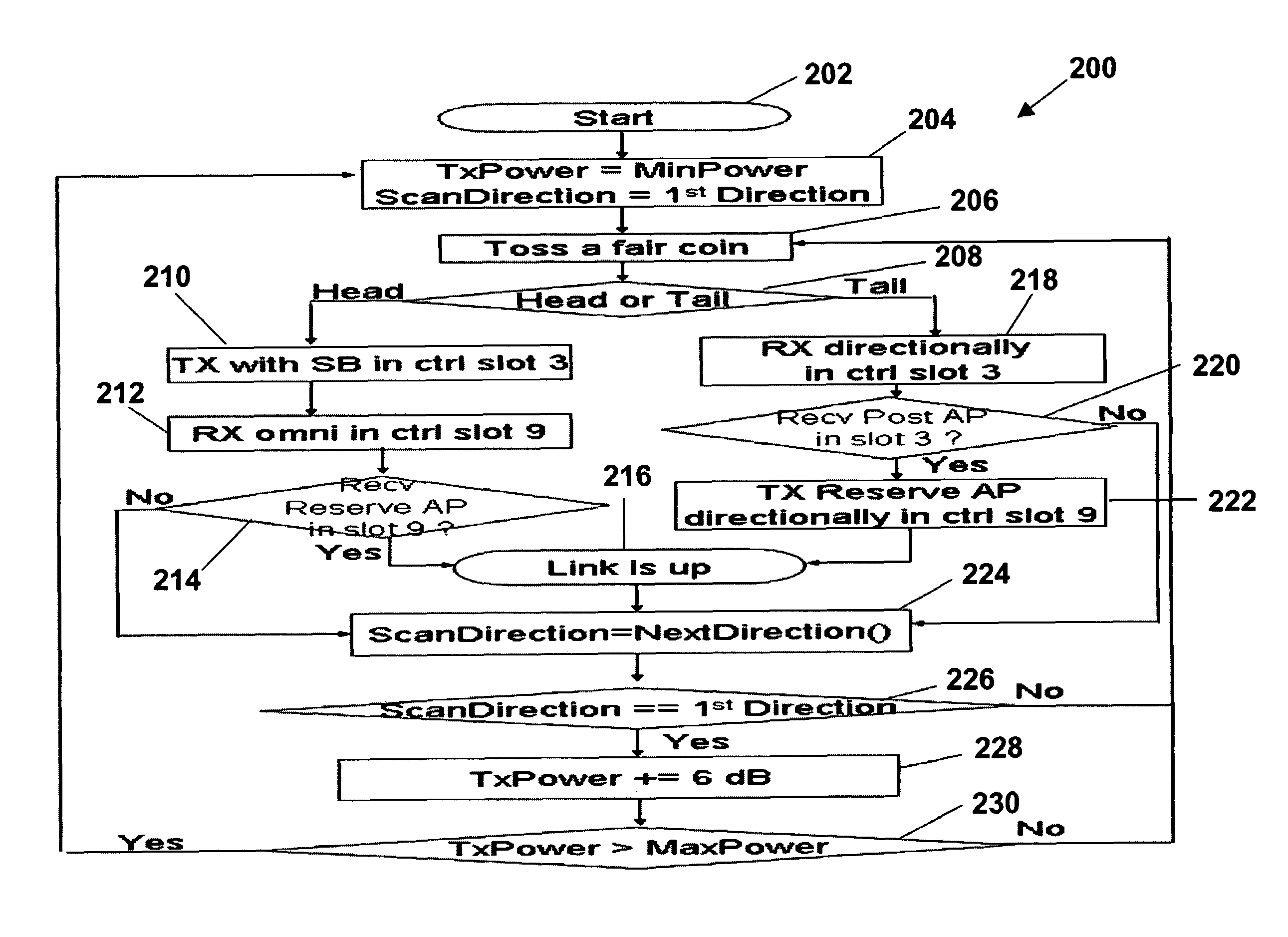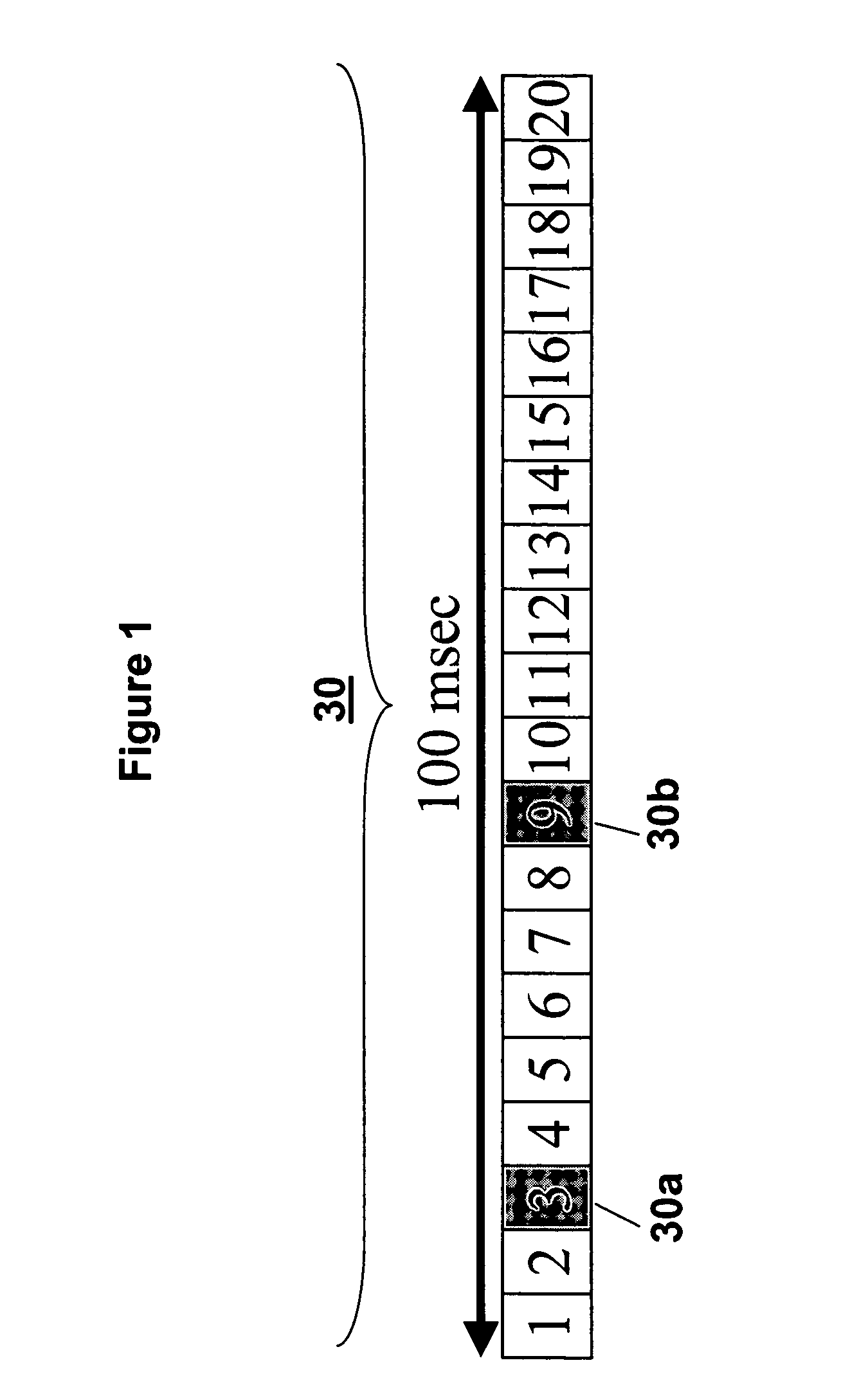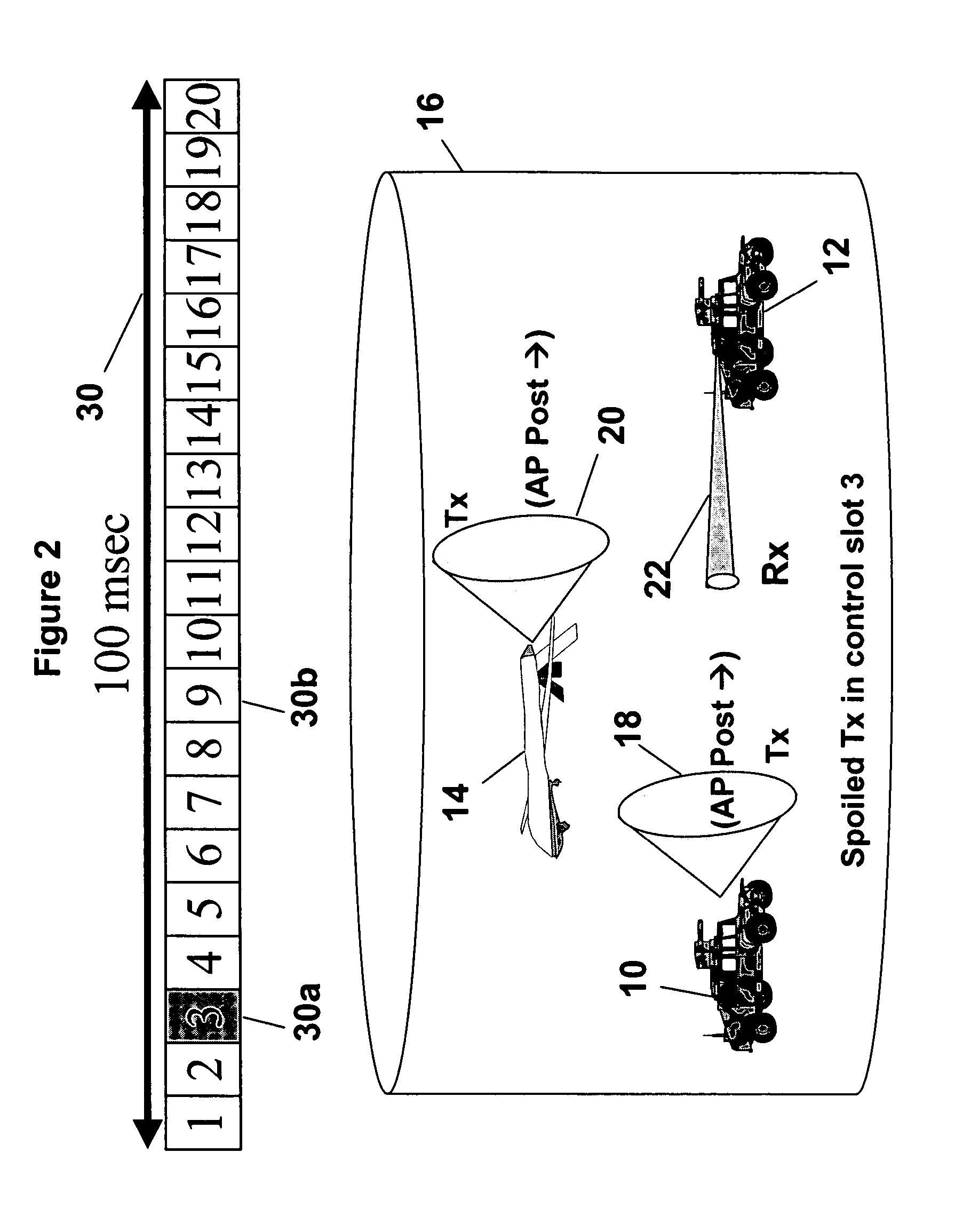Method of forming directional wireless networks using in-band channels
a wireless network and directional antenna technology, applied in the field of mobile communications networks, can solve the problems of omni-directional transmission source broadcasting packets susceptible to detection or interception, enemy transmitters may easily jam omni-directional receivers for receiving ap signals, and the network lacks a central server to support standard networking functions, etc., to achieve the highest antenna gain and a narrow discovery time
- Summary
- Abstract
- Description
- Claims
- Application Information
AI Technical Summary
Benefits of technology
Problems solved by technology
Method used
Image
Examples
Embodiment Construction
[0027]The present invention provides a method of forming a mobile network using directional antennas. Directional antennas, such as Phased Array Antennas (PAA) can focus radiation energy in a narrow angle to form wireless links between nodes in a network. Directional antennas have a number of advantageous properties for communications networking—high data transmission rates, long range communication, as well as LPD, LPE, LPI and AJ as mentioned above. The present invention implements neighbor discovery with blind announcements without sacrificing the inherent LPD advantages of directional antennas.
[0028]The neighbor discovery process, i.e., the sending and receiving of the announcement packets (AP), exchanging position information and selecting slots for a persistent link, is based on Spatial-Time Division Multiple Access (S-TDMA) protocol architecture. Referring to FIG. 1, the neighbor discovery process of the present invention uses a control structure or architecture generally des...
PUM
 Login to View More
Login to View More Abstract
Description
Claims
Application Information
 Login to View More
Login to View More - R&D
- Intellectual Property
- Life Sciences
- Materials
- Tech Scout
- Unparalleled Data Quality
- Higher Quality Content
- 60% Fewer Hallucinations
Browse by: Latest US Patents, China's latest patents, Technical Efficacy Thesaurus, Application Domain, Technology Topic, Popular Technical Reports.
© 2025 PatSnap. All rights reserved.Legal|Privacy policy|Modern Slavery Act Transparency Statement|Sitemap|About US| Contact US: help@patsnap.com



